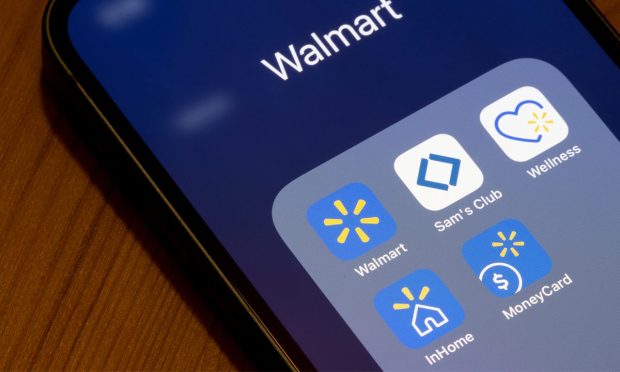Walmart Investor Day a Chorus of Omnichannel Dominance and Deepening Digital

At its investor day in Tampa, Florida, on April 4-5, Walmart executives laid out a five-year plan that emphasizes membership, choice and a thoroughly modernized customer experience.
In his closing day remarks, Walmart President and CEO Doug McMillon said a 4% growth target over the next three to five years “will be enabled by our strength in physical retail and our expanding digital relationship fueled by pickup and delivery. We’ll build on that digital relationship with our first and third-party eCommerce assortment and general merchandise.”
He said the retailer is entering a phase “that is less about scaling store pickup and delivery, eCommerce assortment and eCommerce FC [fulfillment center] square footage, and more about execution and operating margin improvement. Sorting out which part of an order comes from a store or club, which partly comes from an FC, and how they work together to enable a delightful customer experience requires a supply chain that is connected from a data and software point of view.”
With McMillon and others pointing to Walmart’s growing volumes in apparel, home goods and general merchandise, as well as a redoubled focus on its seller marketplace, he said, “Combine our physical footprint from stores, clubs, and our supply chain with new services and better technology and you get the leading omnichannel retailer globally.”
Rumblings about Walmart’s automation investments preceded the event, and on that front, McMillon said, “Think of these as automated storage and retrieval systems in four forms,” calling out one for its ambient fulfillment centers, one for perishable food, one for eCommerce FCs, and one for market fulfillment centers or MFCs.
Owned Brands, Digital Upgrades, Upscale Customers
During his remarks, Walmart U.S. President and CEO John Furner said the everyday-low-price leader is holding to its promise to help consumers battle inflation by keeping down price points on essentials as it pivots to more owned brands across more categories. Furner said Walmart now has 22 owned brands delivering over $1 billion in sales, “and eight of them alone are in the food and consumable areas.”
Furner also pointed to rising categories like pet accessories and pet meds and new beauty brands where “customers are looking for more options.”
He also spoke of retaining the high-income consumers that tried Walmart during the inflation battle of 2022-23, saying, “We haven’t always been able to hold on to those customers. Now I’m confident it can be different because we offer so many more solutions in terms of flexibility with omni-source solutions. Having these flexible options paired with great products, great prices, and great value gives us confidence in our ability to retain these customer groups.”
On the mobile app and website redesign news that broke Monday (April 3), Furner added, “We’ve always said you should be able to walk into a Walmart store and tell what season it is, and I think you’ll see that happen exactly the same way on the homepage now.” He said Walmart is now offering 400 million SKUs online, calling it “significant growth from a year ago,” with 200 million apparel items and over 60 million home goods SKUs.
With omnichannel the underlying message of the two-day event that included tours of nearby Walmart FCs, CFO John David Rainey said “Our omnichannel model is resonating with customers seeking out Walmart online and in stores curbside via delivery. And we’re growing mindshare for our convenience, which nearly matches our mindshare for price and appeals to customers, regardless of their income level.”
Rainey added that “We’ve made significant progress in our food and consumables business, consistently growing our share and deepening customer trust. We want to do the same thing with general merchandise by investing in our in-store and online experience.”
“While inflation is still an issue, and category-mix pressures are expected to persist this year, we’re focused on improving shopability, curation, and clarity across choice-intensive areas such as apparel and home, and more tightly connecting our stores and online experiences.”

